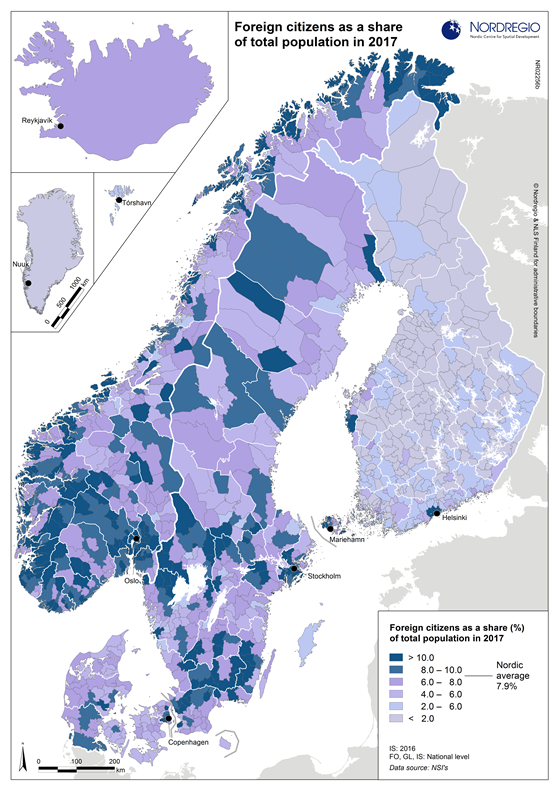At a national level, foreign citizens make up, on average, 7.9% of the populations of the Nordic countries, with Norway having the highest share (11%) and Greenland the lowest (2%). There are also particular regions which stand out as having high shares of foreign citizens in their populations, one such example being the typical border region. High shares of foreign citizens can be found in border areas such as: the Swedish part of the Torne River Valley, bordering Finland; the southern part of the Swedish-Norwegian borderland (in particular the Swedish region Värmland and the northernmost municipality of Västra Götaland, Strömstad); Western Skåne in Southern Sweden, situated close to Denmark; and Southern Jutland, in Southern Denmark, bordering Germany.
Another type of region with high shares of foreign citizens is capital regions – Copenhagen, Helsinki, Mariehamn, Oslo and Stockholm. Particularly high rates can also be found in in-land municipalities clustered in Southern Norway; Småland in Southern Sweden; Central Mid-Sweden; the central parts of Jutland in Denmark; and many of Norway’s coastal municipalities. In addition, several individual municipalities stand out with high shares of foreign citizens, for instance Närpes on Finland’s west coast.
A high share of foreign citizens in the population depends both on immigration rates and the presence of foreign citizens who choose not to become citizens in their country of residence. There are many reasons to not change citizenship, and several explanations to why the shares of foreign citizens vary across the Nordic municipalities. For example, the capital regions and many coastal municipalities in Norway depend to a varying degree on expats or labour-immigrants who capitalise on temporary employment opportunities but do not intend to become long-term residents. In some Nordic border regions, what starts out as cross-border commuting may lead to settling in the neighbouring country (due to good infrastructure connections, closeness of the languages, etc.). In some areas, such as Finnish Närpes, local or regional strategies to address the relative lack of local labour supply have resulted in foreign citizens moving there.

